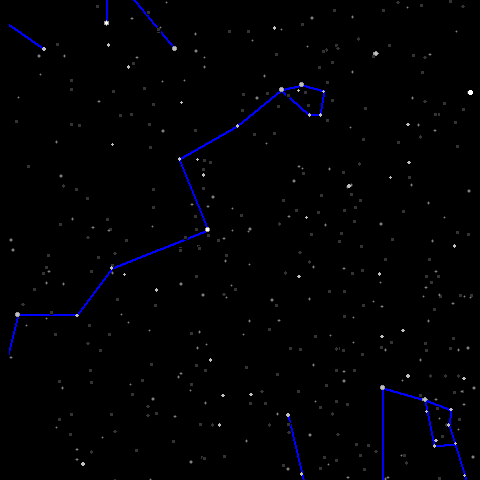June Sky: The Three Biggest Constellations
Posted
Last Updated
By Joe Rao
June presents a perfect opportunity to spot the three biggest constellations in the sky — Hydra, Virgo and Ursa Major — but you may have to look beyond standard star charts to find the Big Three. Constellation patterns differ from star chart to star chart and are not standardized. There are two main reasons: people see constellations in different ways, and modern astronomy does not consider constellations as star pictures but rather as specific sky areas. Standard star charts that show the night sky for a particular time of the night and that include only the principal stars visible to the naked eye do not give an accurate idea of a constellation’s size. For example, a map of the United States, or even a map of New York state, does not help you find your way around Manhattan; for that, you need a detailed street map. Similarly, star charts designed to show the positions of the constellations for a specific time of the night are only intended to give an overview.
Soon after darkness falls on these early June evenings, the “Big Three” — that is, the three largest constellations in our sky, Hydra (the Water Serpent), Virgo (the Maiden) and Ursa Major (the Great Bear) — will be in full view.
Overall, Hydra spans over 100 degrees of the sky and takes nearly seven hours to rise into full view. This tremendously long creature is not only the longest constellation but also the largest based on its area in square degrees, according to official boundaries established by the IAU. Hydra covers 1,304 square degrees, or about 3% of the entire sky, which isn’t surprising considering the linear extent of this beast.
But it is far less obvious that Virgo is the second-largest constellation, with an area of 1,294 square degrees, followed by Ursa Major, at 1,280 square degrees.
Hence, the one-time picturesque patterns of people, animals and objects have evolved into arbitrarily defined areas of the sky. Let’s take a closer look at these three big patterns that currently dominate our late-spring evening sky.
1. Hydra (the Water Serpent)
June’s warmer evenings inspire many of us to spend more time under the sky, perhaps to seek out the smaller and less-conspicuous constellations. Observers in an area with a dark sky and a wide-open view toward the southern part of the sky will enjoy tracing out the great length of Hydra, sometimes called the Water Serpent or the Snake. The imagery dates back to 1200 B.C. and may be related to a more important beast: the dragon Tiamat of the Euphratean epic about the hero Gilgamesh.
Some also say, however, that Hydra commemorates the fabled multiheaded serpent that gave the mighty Hercules so much trouble. Yet our celestial Hydra has only one head, near the sickle of Leo. That head is a pretty little group of five stars worth looking for, about halfway between the bright stars Regulus and Procyon. From there, if the sky is clear and dark, you can follow the remaining scraggly stream of the snake’s body; its zigzagging procession of faint stars leads south and east for more than an additional 90 degrees across the sky.
READ full article at https://www.space.com/big-constellations-hydra-virgo-ursa-major

